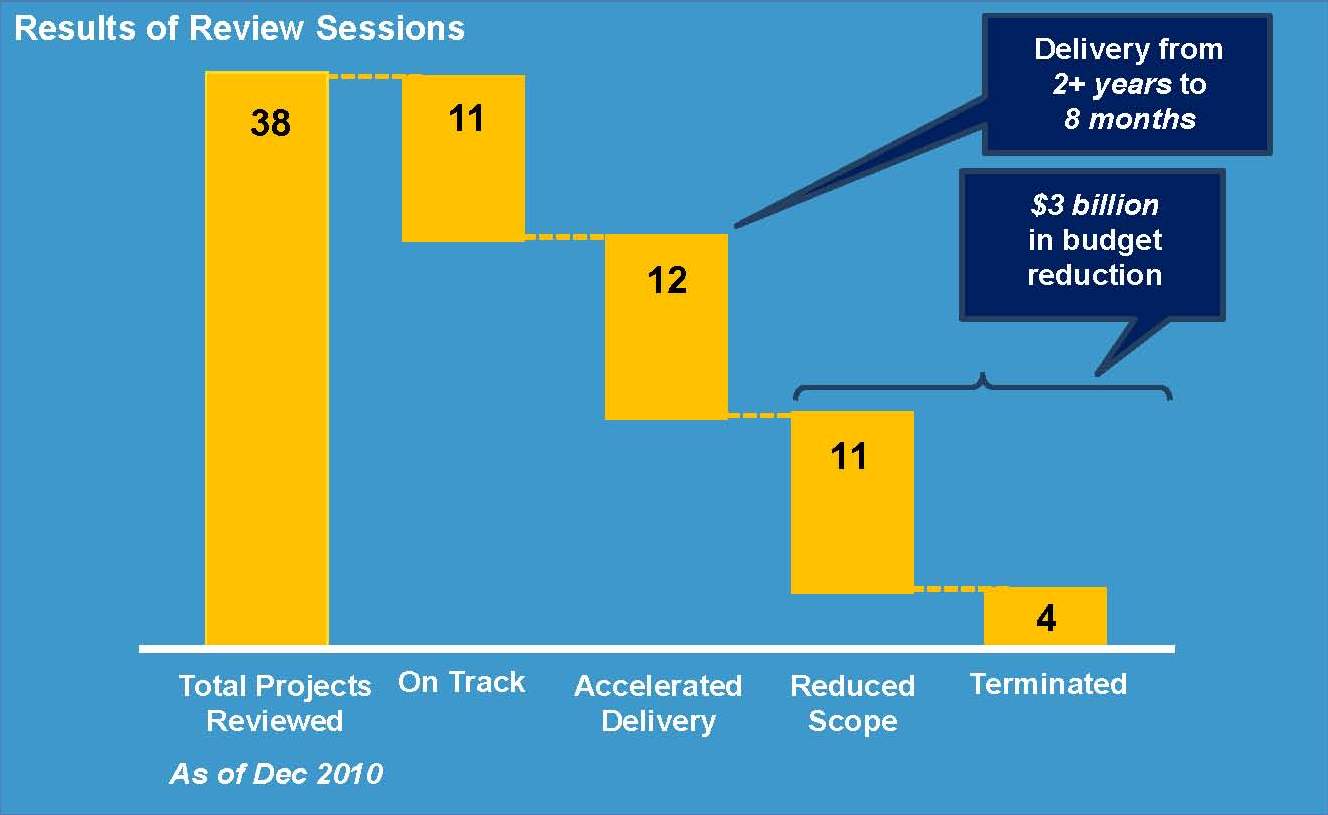
For too long, many government IT projects cost hundreds of millions of dollars more than they should, took years longer than necessary to deploy, and delivered technologies that were obsolete by the time they were completed.
This summer we took a hard look at 26 high priority projects that were either over budget, behind schedule, or at high risk for the kinds of problems that too often plague our large IT efforts. We completed the review of two projects in October, and this week, we announced the results from our review of the next 16 projects.
-
One project has been terminated entirely, as the agency decided the project was too troubled to continue.
-
For seven projects we have accelerated delivery of meaningful functionality.
-
For eight projects, we’ve rescoped the projects back to increase the likelihood of success and reduced budgets in the process.
The bottom line is that we’ve reduced lifecycle cost by $1.3 billion, and cut the time for delivery of functionality down by more than half, from two to three years down to an average of 8 months.
In reviewing 38 total projects, we have significantly accelerated delivery in 12 projects, with increased functionality coming online every few quarters rather than every few years, and reduced the scope or terminated 15 others, achieving a total of $3 billion in lifecycle budget reductions.
So we have proven that we can improve our IT performance on a project-by-project basis. But just as importantly, we’re using the lessons from this work to identify the structural changes required to drive sustainable improvements across government.
That is why we announced a 25 Point Implementation Plan to Reform Federal IT Management, which will fundamentally change how the government buys and manages IT.
Some highlights of the implementation plan include:
-
Turnaround or terminate at least one-third of underperforming projects in the IT portfolio within the next 18 months
-
Shift to “a Cloud First” policy. Each agency will identify three “must move” services within three months, and move one of those services to the cloud within 12 month and the remaining two within 18 months.
-
Reduce number of Federal data centers by at least 800 by 2015
-
Only approve funding of major IT programs that:
-
Have a dedicated program manager and a fully staffed integrated program team
-
Use a modular approach with customer-facing functionality delivered every 6 months
-
Use specialized IT acquisition professionals
-
-
Work with Congress to:
-
Consolidate commodity IT funding under the Agency CIOs and
-
Develop flexible budget models that align with modular development
-
These steps will help catalyze a fundamental reform of Federal IT, which is essential to improving the effectiveness and efficiency of the Federal Government.
Vivek Kundra is the US Chief Information Officer



